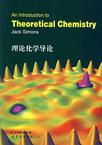理论化学导论
出版时间:2004-11 出版社:世界图书出版公司 作者:Jack Simons 页数:458
Tag标签:无
内容概要
Let's begin by discussing what the discipline of theoretical chemistry is about. I think most young students of chemistry think that theory deals with using computers to model or simulate molecular behaviors. This is only partly true. Theory indeed contains under its broad umbrella the field of computational simulations,and it is such applications of theory that have gained much recent attention especially as powerful computers and user-friendly software packages have become widely available. However, this discipline also involves analytical theory, which deals with how the fundamental equations used to perform the simulations are derived from the Schrrdinger equation or from classical mechanics, among other things. The discipline also has to do with obtaining the equations that relate laboratory data (e.g., spectra, heat capacities, reaction cross-sections) to molecular properties(e.g., geometries, bond energies, activation energies). This analytical side ofthe0ry is also where the equations of statistical mechanics that relate macroscopic properties of matter to the microscopic properties of the constituent molecules are obtained.
书籍目录
Introductory remarksAcknowledgementsPart I Background material 1 The basics of quantum mechanics l.l Why quantum mechanics is necessary for describing molecular properties 1.2 The Schr6dinger equation and its components 1.2.1 Operators 1.2.2 Wave functions 1.2.3 The Schr6dinger equation 1.3 Your first application of quantum mechanics- motion of a particle in one dimension 1.3.1 Classical probability density 1.3.2 Quantum treatment 1.3.3 Energies and wave functions 1.3.4 Probability densities 1.3.5 Classical and quantum probability densities 1.3.6 Time propagation of wave functions 1.4 Free particle motions in more dimensions 1.4.1 The Schr6dinger equation 1.4.2 Boundary conditions 1.4.3 Energies and wave functions for bound states 1.4.4 Quantized action can also be used to derive energy levels 1.4.5 Quantized action does not always work 2 Model problems that form important starting points 2.1 Free electron model ofpolyenes 2.2 Bands of orbitals in solids 2.3 Densities of states in one, two, and three dimensions 2.4 The most elementary model of orbital energy splittings: HiJckel or tight-binding theory 2.5 Hydrogenic orbitals 2.5.1 The ~ equation 2.5.2 The ~ equation 2.5.3 The R equation 2.5.4 Summary 2.6 Electron tunneling 2.7 Angular momentum 2.7.1 Orbital angular momentum 2.7.2 Properties of general angular momenta 2.7.3 Summary 2.7.4 Coupling of angular momenta 2.8 Rotations of molecules 2.8.1 Rotational motion for rigid diatomic and linear polyatomic molecules 2.8.2 Rotational motions of rigid non-linear molecules 2.9 Vibrations of molecules 3 Characteristics of energy surfaces 3.1 Strategies for geometry optimization 3.2 Normal modes of vibration 3.2.1 The Newton equations of motion for vibration 3.2.2 The use of symmetry 4 Some important tools of theory 4.1 Perturbation theory and the variational method 4.1.1 Perturbation theory 4.1.2 The variational method 4.2 Point group symmetry 4.2.1 The C3v symmetry group of ammonia - an example 4.2.2 Matrices as group representations 4.2.3 Reducible and irreducible representations 4.2.4 Another example 4.2.5 Projection operators: symmetry-adapted linear combinations of atomic orbitals 4.2.6 Summary 4.2.7 Direct product representations 4.2.8 OverviewPart II Three Primary areas of theoretical chemistry 5 An overview of theoretical chemistry 6 Electronic structures 7 Statistical mechanics 8 Chemical dynamicsPrlblemsSolutionsAppendix:Character tablesIndex
图书封面
图书标签Tags
无
评论、评分、阅读与下载
